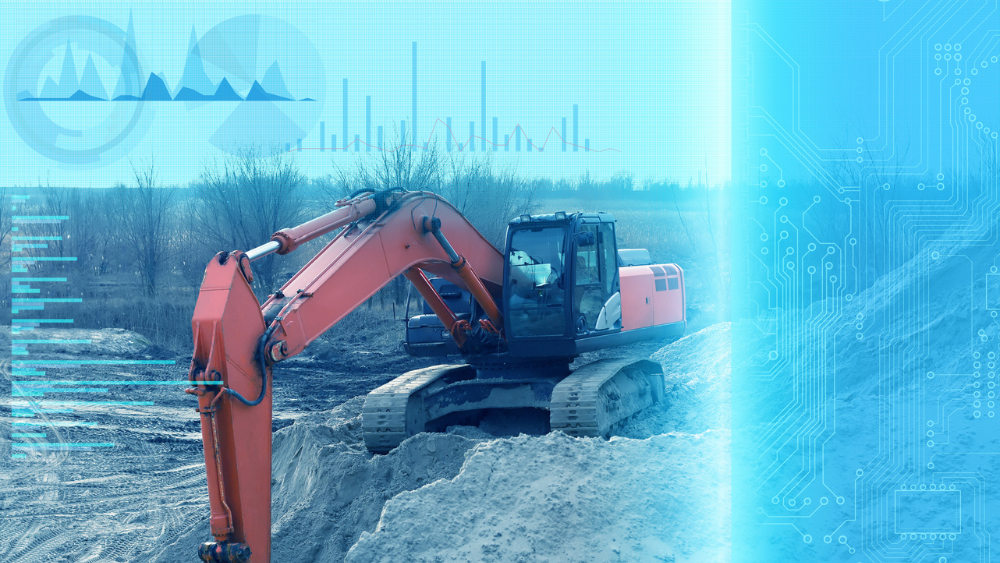Back to articles
Mining industry overcomes technical challenges to embrace IoT
 Estimates vary widely, but according to a range of analysts there are approximately 15 billion connected IoT devices deployed in 2023. Even using the more conservative predictions, this will double by the end of the decade.
Estimates vary widely, but according to a range of analysts there are approximately 15 billion connected IoT devices deployed in 2023. Even using the more conservative predictions, this will double by the end of the decade.
No industry is beyond the reach of the IoT. Healthcare, logistics, agriculture, retail, government, academia, and more are all heavily investing in the IoT. So too, are manufacturing and industrial companies in the guise of 'Industry 4.0'—the umbrella term for technologies such as industrial IoT (IIoT), machine learning (ML), and big data—to power digital transformation, increase productivity and reduce downtime.
But mining is one industrial sector rarely mentioned regarding IoT adoption. That's because, unlike manufacturing, construction, or commerce, the mining industry has unique challenges, making IoT adoption a much more demanding proposition.
Going underground
Mines are a connectivity nightmare. They are frequently remote, often underground, and involve confined spaces in a generally hostile environment, which can make connectivity both limited and unreliable. Worse still, declining ore grades near the surface send miners deeper. For example, with some gold mines operating 4 km below the earth's surface, rolling out an IoT system from the surface to the rock face is no trivial undertaking.
Despite the challenges, many large mining companies are investing in IoT technologies that, if implemented successfully, can provide cost optimization and productivity improvements, notify the need for predictive maintenance, ensure the safety of mine staff, and improve decision-making in the day-to-day running of a mining operation.
For example, using explosives in mining operations to break mineral-bearing rocks open is common; following a blast, toxic fumes can linger for hours. In-situ or wearable environmental sensors can ensure that downtime is minimal and that workers don't reenter the blast site until it is safe. Similarly, exhaust fumes emitted from underground excavating equipment and drilling machines can be kept within limits by monitoring with gas detectors and particle sensors.
Ventilation is also a high cost in underground mines, so ventilation-on-demand systems can significantly reduce energy consumption. Sensors can constantly monitor airflow and quality and remotely adjust the fan speed to optimize the trade-off between air quality and energy use. Paired with connected occupancy sensors, IoT systems can ensure ventilation is only activated in a part of the mine currently in use. Newmont Goldcorp's Porcupine gold mine in Canada installed such a system in 2018, a project the miner says has cut its on-site electricity consumption by half.
Mining is also an asset-intensive industry, spread across a vast area that could measure 1000 square kilometers or more, and that's just on the surface. Sensors can monitor critical assets across the mine, above and below ground, tracking their whereabouts and recording the impacts, vibration, and temperatures to which they are subject to predictive support maintenance.
The connectivity challenge
Mining connectivity systems succeed or fail in the quality of the infrastructure. Traditionally, underground installations have been achieved by combining coaxial and fiber optic linking sensors to the surface. However, wired networks are expensive to install, lack flexibility, and consume valuable materials such as copper. And such networks are fragile, making them vulnerable in locations where heavy machinery constantly moves back and forth, and explosive blasting is a common hazard.
But because mine tunnels and shafts are challenging RF environments, completely wireless solutions are tough to implement. Instead, a combination of wired and wireless networks can leverage both advantages. For example, a network of communication cables could be used to service the main tunnels. In contrast, the 'last mile' to the rock face could be serviced by sensors forming a Bluetooth LE mesh network or using Bluetooth Long Range to overcome any RF range issues.
- Read more: Bluetooth Mesh for Industrial IoT.
The role of cellular IoT
As cellular IoT network infrastructure matures worldwide, the technology is increasingly becoming available where mining operations are established. The technology can either power a gateway to pass data from a group of Bluetooth LE IoT devices to the cloud or power sensors with end-to-end IP connectivity. Base stations can support tens of thousands of cellular IoT connections, the communications are fully bidirectional, robust, reliable, and secure, and the technology supports 4G and is ready for 5G.
Moreover, NB-IoT, which together with LTE-M forms the available cellular IoT solutions, can penetrate further below ground than other wireless IoT technologies. Precisely how far depends on a host of factors, but certainly deep enough to support some fixed installations such as elevators or conveyor motor monitoring near the surface.
- Read more: How to get even more from NB-IoT
AI and machine learning
The next step will be to increase the return on investment of wireless IoT technologies at a mine site by using solutions powerful enough to not only supervise the sensors and handle the wireless connectivity but also to perform ML at the edge of the network.
Using historical data inputs, IoT edge devices could use ML to make predictions and provide recommendations on equipment utilisation, guide staff and vehicles on the shortest distances across the surface or in tunnels, help automate certain tasks such as rock face drilling and mitigate danger during blasting operations. The result would be a truly smart mine.


